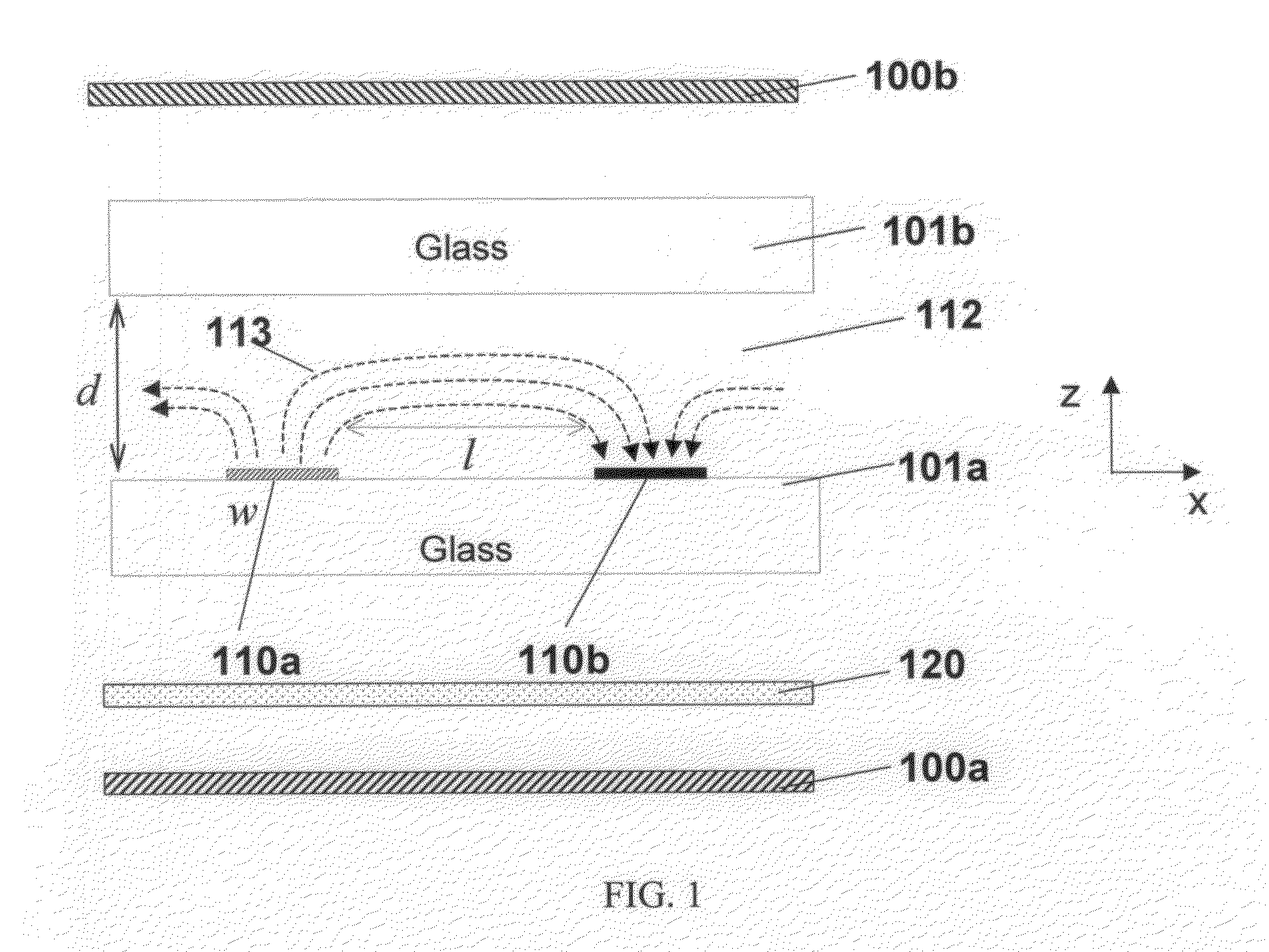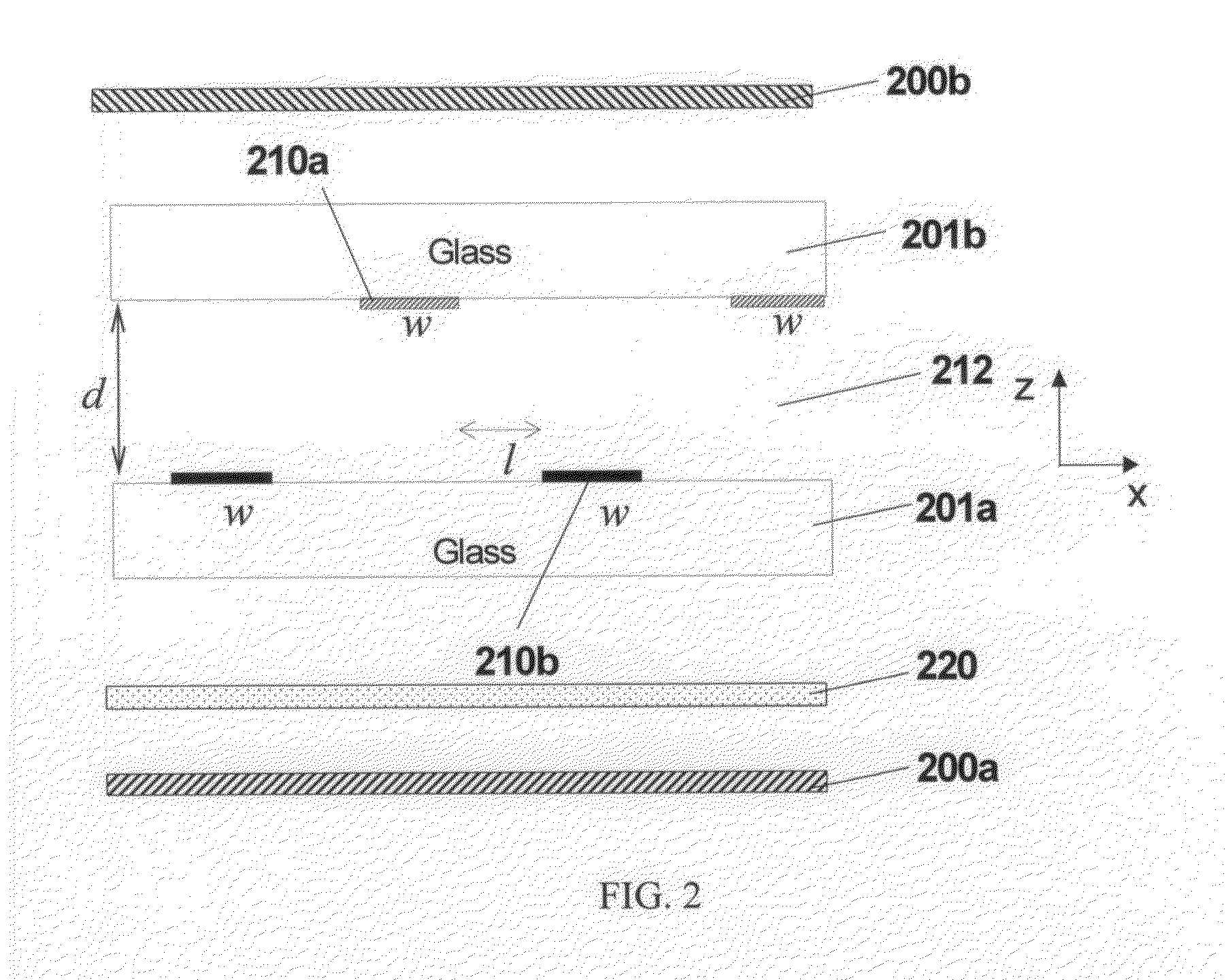Liquid Crystals Composition and Liquid Crystal Display with Patterned Electrodes
a technology of liquid crystals and electrodes, applied in the field of liquid crystal composition, can solve the problems of damage to alignment films, fine pixel electrodes, and increased costs associated with fine dust and fine electric discharge, and achieve stable polymer stability, high optical performance, and high light efficiency
- Summary
- Abstract
- Description
- Claims
- Application Information
AI Technical Summary
Benefits of technology
Problems solved by technology
Method used
Image
Examples
Embodiment Construction
[0072]Before explaining the disclosed embodiments of the present invention in detail it is to be understood that the invention is not limited in its application to the details of the particular arrangements shown since the invention is capable of other embodiments. Also, the terminology used herein is for the purpose of description and not of limitation.
[0073]The following abbreviations and acronyms are listed below to facilitate the explanation of the description of the present invention.
[0074]BPLCD is used herein to mean “blue phase liquid crystal display”
[0075]CB15 is a chiral dopant material, S-4′-(2-methylbutyl)-4-cyanobiphenyl, commercially available from Merck & Co., Inc.
[0076]CF3 is the chemical symbol for “carbon trifluoride”
[0077]Cl is the chemical symbol for “chlorine”
[0078]CN is used herein to represent the “cyano group”
[0079]Darocur 1173 is a liquid photoinitiator, 2-Hydroxy-2-methyl-1-phenyl-propan-1-one, commercially available from Ciba Specialty Chemicals, Inc. Daroc...
PUM
| Property | Measurement | Unit |
|---|---|---|
| temperatures | aaaaa | aaaaa |
| temperatures | aaaaa | aaaaa |
| height | aaaaa | aaaaa |
Abstract
Description
Claims
Application Information
 Login to View More
Login to View More - R&D
- Intellectual Property
- Life Sciences
- Materials
- Tech Scout
- Unparalleled Data Quality
- Higher Quality Content
- 60% Fewer Hallucinations
Browse by: Latest US Patents, China's latest patents, Technical Efficacy Thesaurus, Application Domain, Technology Topic, Popular Technical Reports.
© 2025 PatSnap. All rights reserved.Legal|Privacy policy|Modern Slavery Act Transparency Statement|Sitemap|About US| Contact US: help@patsnap.com



